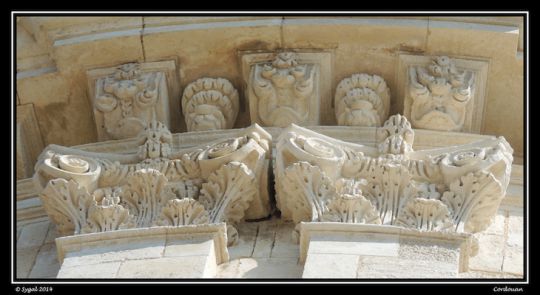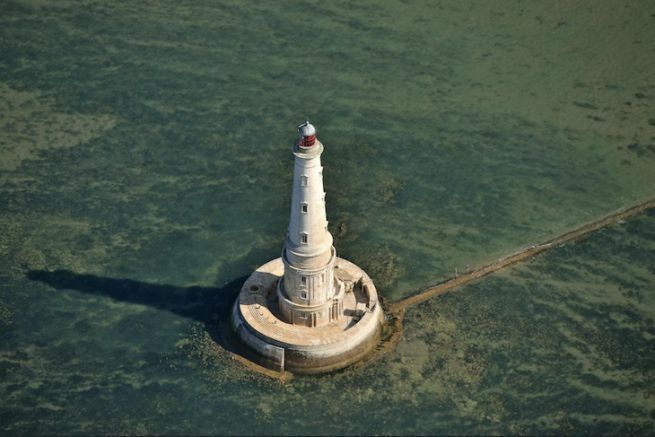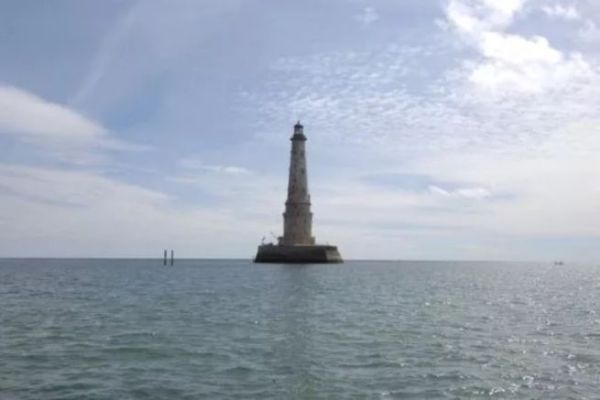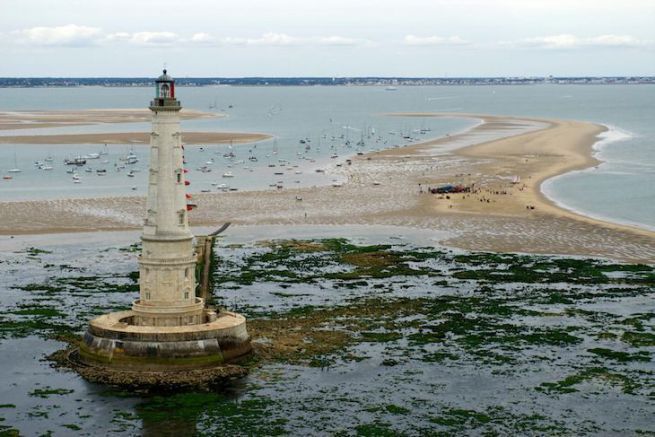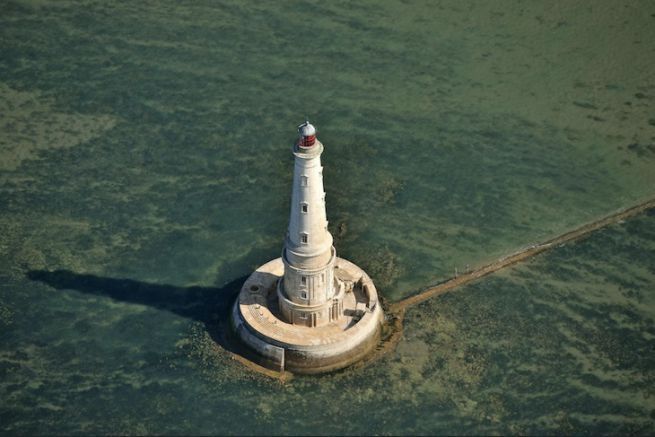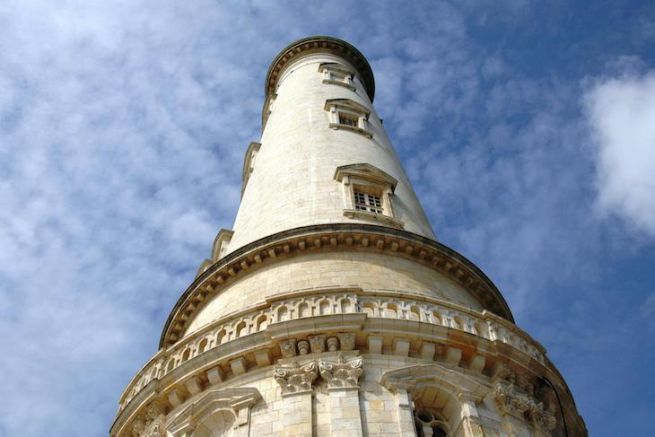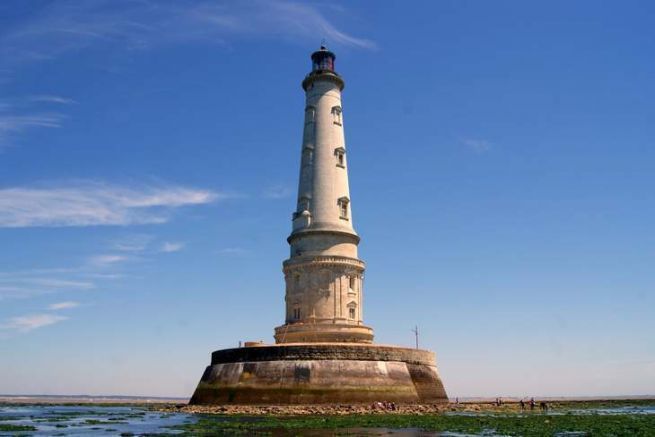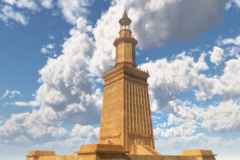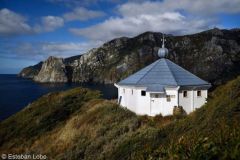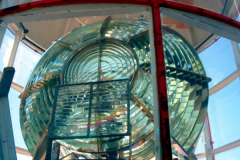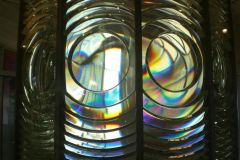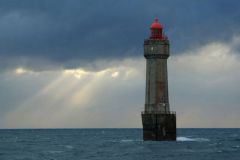The mouth of the Gironde, the marine cemetery
The mouth of the Gironde, an essential passage for the sailors who frequent the port of Bordeaux, is feared by all. This passage of about twenty kilometres is where the ocean and the river meet, and during storms, the waves are impressive. Europe's largest estuary is also known for its powerful tidal currents and shifting sandbanks.
Since the Middle Ages, ships waited for a combination of several factors to enter and leave the port: winds, currents and tides. However, there were hundreds of shipwrecks there, despite stories telling that some hermits lit fires for sailors and prayed for their souls on the islet of Cordouan... Even if no historical document attests it, several buildings would have been built there.
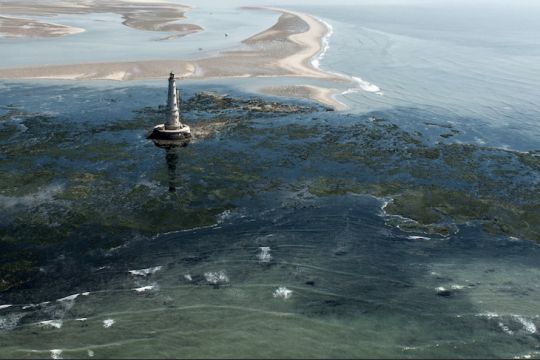
Securing the mouth of the Gironde
In 1360 On the orders of the Black Prince (Edward Prince of Wales), chief of the English armies, who wished to secure the mouth of the Gironde, a fire tower was built. This 16 m high polygonal tower called"Tower of the English" is overhung by a platform on which a hermit was charged to feed a night wood fire.
In 1584 Henri III ordered the construction of a new lighthouse next to the ruins of the Black Prince's Tower. The architect Louis de Foix is responsible for the construction of this"royal work", which will consist of a three-storey round tower built on an enormous platform. Construction was slowed down by religious wars, technical and financial problems, but the architect continued his work, even after the death of the King of France.
This is Henry IV, in 1594 which takes over from the project which takes on even more"royal" presence. Indeed, the lighthouse takes the appearance of a temple dedicated to the glory of the two kings and the Catholic character of the monarchy. Cordouan will become the only lighthouse to have such a luxurious chapel and ornaments (marble, woodwork, sculptures...).
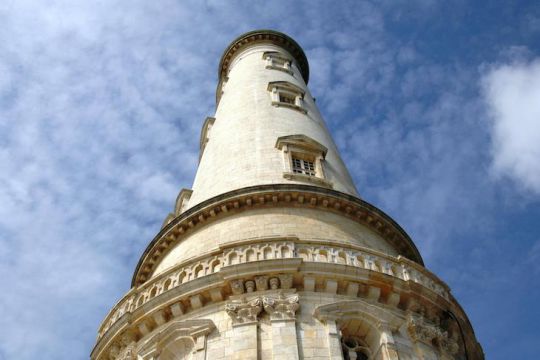
The construction of the"Lighthouse of the Kings" is completed in 1611 after 25 years of work. Louis de Foix died in about 1603, without seeing his work finished. Cordouan is considered as the most beautiful lighthouse of the world, assimilated to the "8 e wonder of the world", overlooking the estuary from its 37 m high. Unfortunately, under the repeated onslaughts of wind and sea, and lack of maintenance, the lighthouse is no longer as functional, leading to new shipwrecks.
In 1722, the function of the Cordouan lighthouse was defined as such "the day (NDRL: it serves) as a beacon, by its elevation for the route of the ships and the night of lantern by the fire* that is maintained there at its summit that guides the ships and prevents them from overlooking the banks of rocks."
It was then that Joseph Teulère, engineer of the Navy's civil ships, was charged with raising the lighthouse and maximizing the lighting in 1786. The Tower gained 20 m in height and became the grandiose monument that we know today.
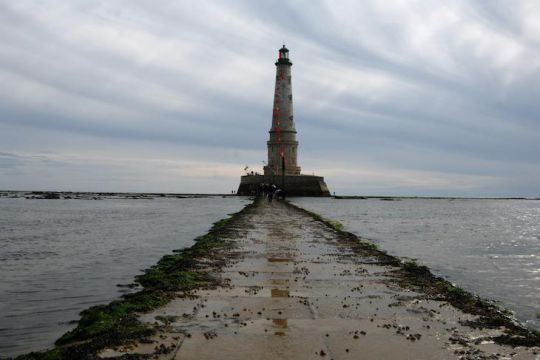
A unique lighthouse
Cordouan is the only lighthouse at sea open to visitors. Every year it welcomes 20,000 visitors who come to climb the 301 stone steps that lead to the lantern that culminates at 68 m high. Accessible at low tide from the Gironde or Charentaise maritime coasts, it is built on a rocky foreshore which is a real place of development for fauna and flora. It is home to about 70 species of algae and over 230 animal species.
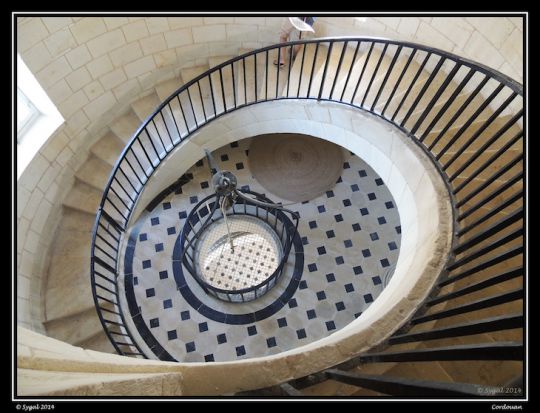
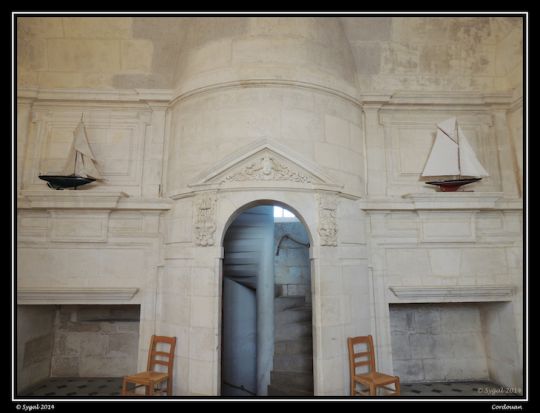
It is the first lighthouse to obtain the title of Historic Monument in 1862, and presents itself as a true museum in the middle of the waves. One can admire the marble floor of the King's apartment or the stained glass windows of the Notre-Dame de Cordouan chapel, installed on the second of the six floors and which is undoubtedly the most majestic room of the lighthouse.

